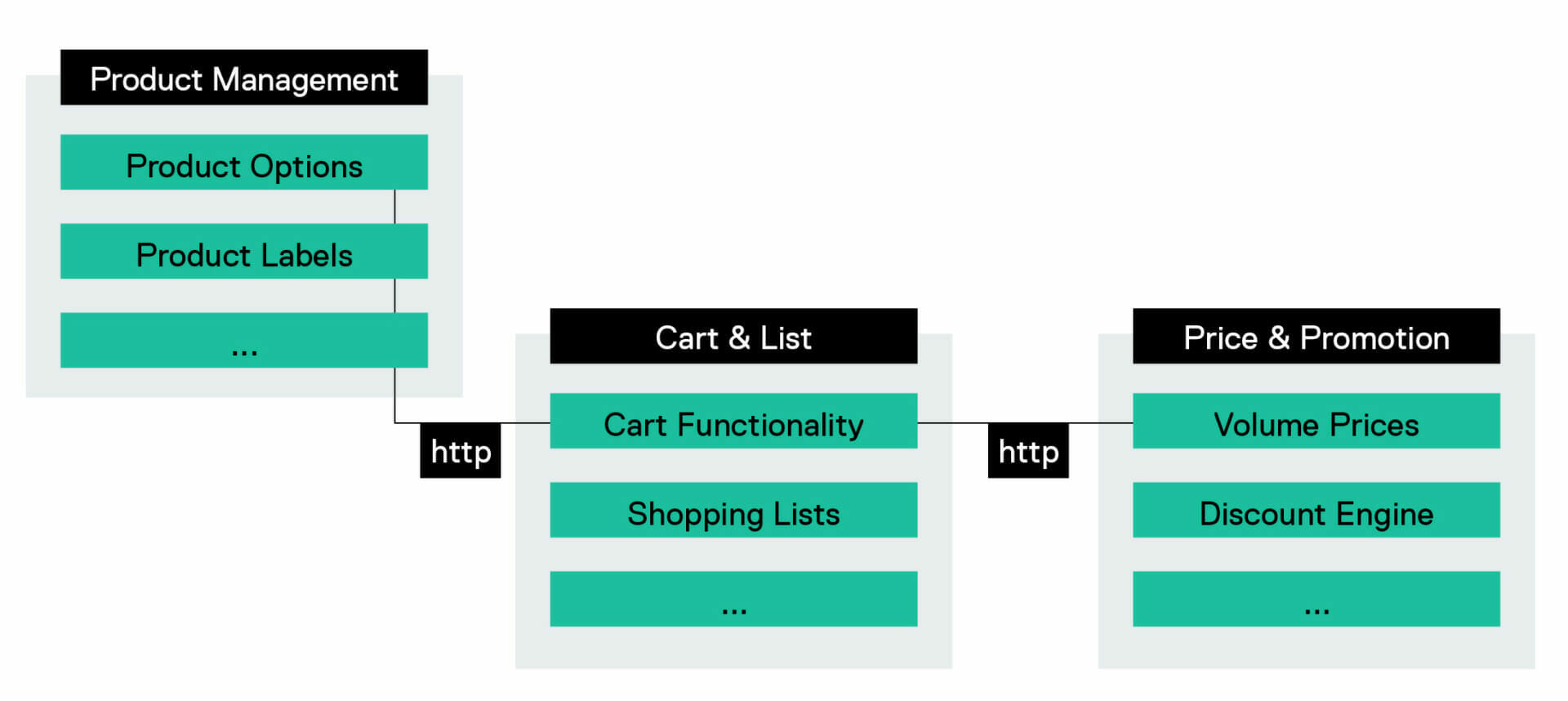Packaged Business Capabilities
Packaged Business Capabilities (PBCs) in Today’s Business World
“By 2024, 30% of digital commerce organizations will use packaged business capabilities (PBCs) to construct their application experiences.”


“By 2024, 30% of digital commerce organizations will use packaged business capabilities (PBCs) to construct their application experiences.”
This quote by Gartner from their 2020 Report “Apply the Principles Behind the Future of Applications to Digital Commerce” gives us a good glimpse into what commerce vendors and those wanting to buy commerce applications need to look for in the future.
But first, let’s take a step back and look at the bigger picture.
In today’s business world, commerce applications are still very much split into 2 bigger sections: Microservices on one extreme, monoliths on the other.
Monolithic software approaches are or should be, a thing of the past. They are bulky, tightly integrated, and off-the-shelf applications, that are hard to customize, if at all. Usually, they also do not allow for fast development or testing of new opportunities, as the whole system needs to be changed, which is time and cost-intensive.
Microservices, on the other hand, use a modular approach where software applications are built-in smaller entities that can then be clustered and managed. These modules, however, can also become quite unmanageable if their functional scope is too small, and thus, the system becomes too complex.

What is a PBC?
So, what is a good in-between way for non-technical users to evaluate the benefits and usability of a software?
This is where Gartner defines a new term called Packaged Business Capability, or PBC. This is an assemble of functionalities, or microservices, that are grouped into larger clusters. “Technically, a PBC is a bounded collection of a data schema and a set of services, APIs and event channels.” All functionality should be encompassed within the PBC and no critical dependency to others should be given. Communication between the different PBCs and other systems should work based on an API infrastructure, to maximize speed and security.
Typically, a PBC consists of logical business entities, such as Order Management, CRM, or Price, to fully make use of all features. Also, each PBC is adding actual business value into a system, with clear definitions of what and why it is necessary.
In order for stakeholders in a company searching for a new commerce software to better grasp the concept and impact on their business decisions, PBCs are a great way for evaluation.

At Spryker, this principle of delivering business value in a condensed, easily manageable, and flexible way has been ingrained in its development process from the very beginning. Even before it was identified by Gartner and named, Spryker saw the benefits of working with Capabilities that enclose a certain functionality with the system. Always keeping in mind the future of commerce and technology, Spryker is developed as a headless solution that leaves the decision of how and where to meet end customers up to our customers. We understood the importance of the principles of Packaged Business Capabilities at an early stage and are continuously shaping our business and products accordingly.
Enabling the fast and agile development and implementations of new features and capabilities will ultimately lead to quicker testing and time-to-market for business owners. The faster you can test new features, markets, products, or channels, the faster you can get a positive ROI. This is why looking at the business impact of PBCs needs to be an important focus in the future of commerce solutions. Delivering best-in-class solutions to businesses and eventually to end customers will make any commerce solution future-proof.
What the future holds
Utilizing the ideas of Packaged Business Capabilities, Spryker ensures that the added value of each capability is relevant to both business and IT entities, as decisions on new functionalities, products or services should be a joint effort.
Decisions like a new vendor, new features, technology trends, or sales channels need to be made based on value-added not only to the company itself but to the customer as well. Agile technology is key, as is a well-informed business. PBCs offer the best of both worlds as they are just the right mix between unmanageable microservices and slow, bulky monolithic legacy systems, while ruling out the downsides, and encompass a value to the business. Also, they provide a good foundation for decision-makers throughout multiple business entities and thus enable fast and future-proof growth.